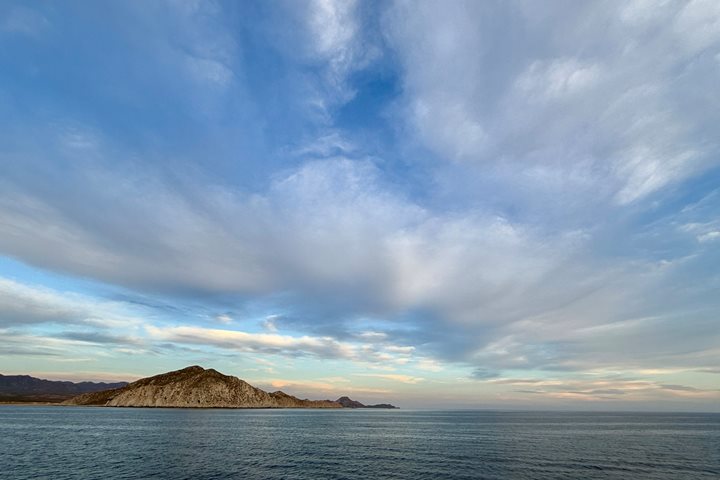Chatham Strait and Pavlof Harbour
The first light of morning brought us the quintessential Southeast Alaska scene: massive mountains of Baranof Island peaking from beneath wispy gray clouds reflected on quicksilver water so still every marbled murrelet was easily spotted before making foraging dives. In hindsight the mellow morning wakeup in Saook Bay was a perfect way to conserve our energy and excitement for what was to come. With requisite briefings now out of the way, it was time for the real show to begin. In the distance groups of whale blows were spotted and an appropriate course was set. As we waited for the whales to surface, a pod of killer whales appeared literally out of nowhere right next to the ship. It was a startling example of just how difficult marine mammal observation can be when three massive killer whales can surprise 70 people in perfect sea conditions. It was as if the humpback whales shape shifted into killer whales. Anticipation began to build for a look at the most amazing animal behavior on the planet (in my opinion). In Southeast Alaska a small group of non-related whales work together in a complicated foraging technique and use tools to catch herring and other small silvery fish. Watching and listening with our hydrophone the whales repeatedly would crash to the surface in unison, mouths open and herring flying. In an instant thousands of gallons of water containing scores of herring were captured in the twelve massive mouths. It was a truly overwhelming experience.
For the afternoon, Head Stewart Becky and I went for a dive at Pavlof Harbour to explore the underwater world. With every rock covered with a suspension feeding animal, it’s obvious that Southeast Alaskan waters are full of nutrients. Becky and I navigated through rocks covered with vibrant purple coralline algae and orange plumed anemones as blue-hued rockfishes curiously watched our bubbles and awkward moves. Scattered remains of crabs were a sure sign of resident giant Pacific octopuses and we were not disappointed in the least. Tucked into a cozy crevice an eight-armed denizen patiently allowed me to film it for the night’s recap. Generally an octopus would be the highlight of an Alaskan dive, but today it was a certain fish that stole the show. While generally found camouflaged amidst shallow brown algae, today we watched a crested sculpin residing within the tentacles of large lion’s mane jelly. The fish was obviously trying to hide inside within the jelly’s tentacles but what does the fish get from this relationship? This particular jelly was speckled with captured prey items (pteropods) so was the fish also feeding on the pelagic snails and using the jelly as protection? Or was it stealing snails from the jelly, making it do all the hard work? We might not ever know, and I’m okay with that.






